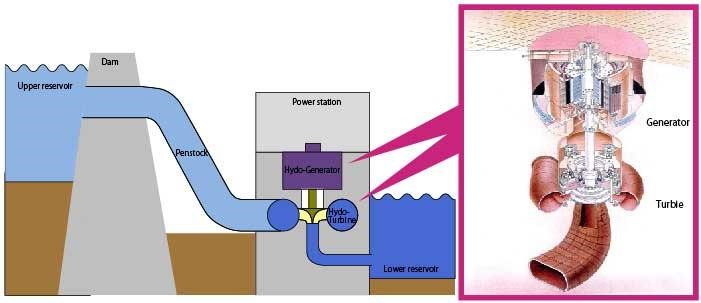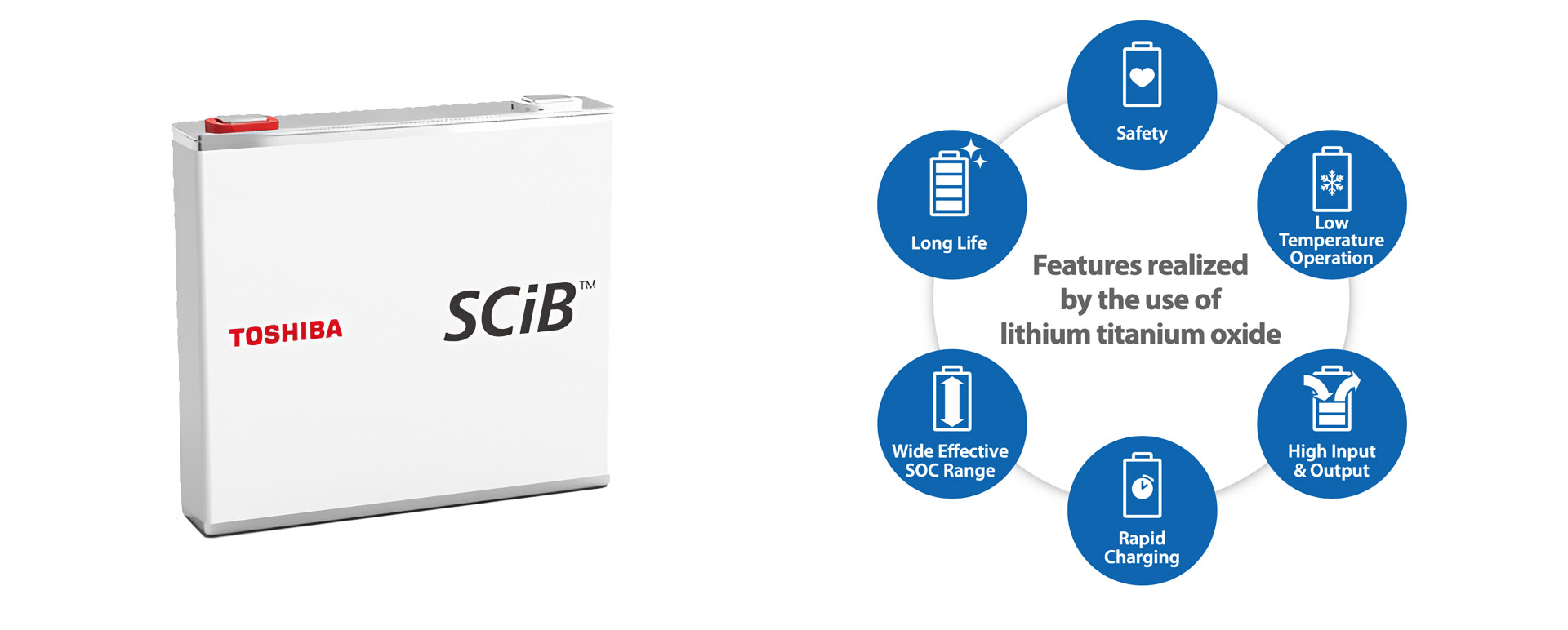
The times are over when orderly ranks of workers went to the machines at seven in the morning, and at eight in the evening they left the factories in the same order and then fell asleep in front of the TV almost simultaneously. Now megacities never fall asleep, and together with them 24/7 and all progressive humanity, "owls", the entertainment industry and global network corporations. All of them need electricity, and at any time, without a pronounced cyclicality. Meanwhile, the world is shifting to renewable energy sources, whose production depends on natural conditions that are not controlled by humans. How in this world to stock up and then share electricity, avoiding blackouts? Let's talk about the example of Toshiba technologies.
Plus the electrification of the entire planet
Electricity consumption will increase. The main directions of this process are the electrification of vehicles, the transfer of some industrial processes from heat energy to power supply, as well as the growth of household consumption of electric current. In particular, according to the forecast of the International Energy Agency, 130 million electric vehicles will drive on our planet by 2040, although in 2018 there were 5.1 million units. In total, the number of cars is now estimated at 1 billion, and by 2035 it may grow to 2 billion units. In the food, pharmaceutical, textile, paper and other industries, electricity will replace coal and gas in the production of medium and low temperature heat. The electrification of poor countries will also continue, where electricity will be more widely used in everyday life.And the share of electricity in total energy consumption will increase from 19% in 2018 to 24% in 2040.
Accordingly, the risks of blackouts will increase - large-scale power outages affecting a wide variety of consumers. According to the World Bank, in 2019, an average of all countries around the world, various organizations experienced 6.8 power outages per month. True, in the OECD countries this figure was 0.4 blackouts, and in Russia - 0.2 blackouts per month.

2003 US and Canadian Power Grid Disaster - View from Space. On August 14, 2003, 10 million people in Canada and 40 million people in the United States were left without electricity. Source: National Oceanic and Atmospheric Administration, Defense Meteorological Satellite Program / Wikimedia Commons
At the same time, the introduction into production and everyday life of such technologies as artificial intelligence and the Internet of Things (including the industrial Internet of Things) requires minimizing power outages that can seriously disrupt the operation of complex intelligent systems.
In addition, the approach to energy consumption will change after the introduction of renewable energy sources, which give different output depending on the time of day and weather. In the daytime or windy weather, solar panels and wind farms generate more current than at night and in calm weather. Accordingly, it is better to save excess energy just in case. But how?
Energy metamorphosis
Conserving energy, especially on an industrial scale, is not easy. Despite the fact that the nature of electricity is well understood, its conservation requires either cumbersome or expensive (or both at the same time) technical solutions. What will protect the highly electrified world of the future from blackouts?
In short, chemistry and mechanics. Almost all methods of accumulating electricity are reduced to its transformation using chemical reactions or mechanical movement.
The first idea that every smartphone user or electric car owner has is: why not use huge lithium-ion batteries on an industrial scale? There have already been attempts to create large drives of this type. For example, Tesla is now working to increase the capacity (from 100 to 150 MW) of the world's largest lithium-ion storage of electricity, collected in 2017 in the state of South Australia on the Green Continent. It consists of Tesla Powerpack lithium-ion batteries designed for utility and industrial users. Inside are 16 separate battery packs, each with an isolated DC / DC converter.
The power of each of them reaches 130 kW, and the energy consumption is 232 kWh. A South Australian storage facility based on Tesla Powerpack helps conserve energy from a nearby wind farm. When fully charged, this "battery" with a capacity of 129 MWh can provide electricity to 30 thousand households.

Signature: Each Powerpack is like a brick from which an energy storage is built. One inverter can be connected from one to 20 Powerpacks. Such battery packs and inverters can be used to create a storage facility of enormous energy intensity. Source: Tesla
However, in addition to the known disadvantages of such batteries, there is also this: by increasing lithium-ion batteries to an industrial scale, we are equally increasing the problem of their disposal. Therefore, remaining environmentally friendly during the period of operation, huge batteries in the future will pose a threat to the environment and hassle when they are written off.
Another way to convert energy is electrolysis.
Let's explain using the example of our H2One installation, which we already talked about.: solar panels provide the process of water electrolysis, as a result of which hydrogen is released; hydrogen is either stored or supplied to the consumer, and hydrogen can immediately provide heat, mechanical energy or electricity when oxidized in a fuel cell. The only problem so far is that while the energy of one H2One station is enough only for small objects, for example, the railway station in the city of Kawasaki (Japan). Industrial scale in the future.
The simplest in principle, but complex in implementation, options are mechanical. The general scheme is as follows: during the peak production period, electricity is stored by pumping gas or water into special tanks, lifting loads to a height or compressing a spring. During a period of power shortage, energy is released mechanically by feeding back the substance, weight, or by loosening the spring. The principle is simple, environmentally friendly, industrially scalable, and very durable. That is why, according to Vygon Consulting, 95% of energy storage systems in the world are pumped storage plants (PSPPs) that use only what nature has given us - water and mountainous landscapes for energy storage.
I twist, twirl, I want to magnetize
For the first time, the use of water and mountainous landscapes for energy storage was invented in Switzerland. In 1909, near the city of Schaffhausen, in the canton of the same name, the world's first pumped storage station Engeweiher with a capacity of 1.5 MW was built. The principle of operation of the PSPP embodied in that installation has been preserved in general to this day.
The station consists of a pump, two reservoirs located at different heights, and a turbine. When there is a surplus of electricity, the pump pumps water into the upper reservoir. When there is not enough electricity in the network, water is diverted to the lower reservoir through a turbine, which provides electricity. The simplicity and reliability of this principle has been proven by time, as well as by the history of the Engeweiher plant itself, which is still in operation - its capacities turned out to be very useful against the background of the development of renewable energy in Switzerland.

The storage hydroelectric power plant is one of the oldest renewable energy sources in the world. Source: Toshiba Energy Systems & Solutions Corporation
The next step in the development of technology was taken in the 1930s. It was understood that water turbines coupled to generators could operate at higher efficiency if their rotational speed was controlled. Therefore, in 1930, Toshiba developed a 750 kVA asynchronous hydrogenerator-motor, which was installed at Yoshino Station in Kanazawa City (Ishikawa Prefecture, Japan). The speed of rotation of the turbine in it could be changed to achieve maximum efficiency.
However, this technology did not find wide application at that time, and subsequently, mainly synchronous hydrogenerator-motors were used, which operate with a constant (synchronous) rotation speed, which is why the input power cannot be changed. This means that it was not easy to adjust the operation of the station to the changing demand (say, at night, when more energy needed to be spent on pumping water and less to give it to the network) - the efficiency of either injection or production decreased.
In 1990, Toshiba again turned to asynchronous hydrogenerator-motor technology: in cooperation with the Tokyo Electric Power Company (TEPCO), the world's first variable speed pumping unit was developed and installed at the Yagasawa pumping station using a secondary excitation AC motor generator. low frequency. It is controlled by a high-speed and high-performance digital controller that can change the input and output power much faster than in conventional hydraulic units, which allows for faster stabilization of power fluctuations in the network, for example, in the event of an emergency. Since then, asynchronous generators-motors at pumped storage power plants began to be used more often, and now they are the most promising model for pumped storage.
In June 2014, the world's largest variable speed pumping unit with a capacity of 475 MVA began operation for the fourth block of the Kazunogawa PSP (Yamanashi Prefecture, Japan), which also has the world's largest pump head (785 m) for a single-stage pump turbine. This station is also operated by TEPCO. Source: Toshiba Energy Systems Co., Ltd / YouTube
The variable speed hydraulic unit increases the efficiency of the pumping and turbine modes, thereby increasing the efficiency of the complete cycle of the pumped storage power plant, as well as reducing vibration and mechanical wear of the system. Moreover, such a machine can instantly respond to sudden changes in electricity demand, associated, for example, with the use of unstable renewable energy sources or blackouts.

And we said: "Pumped storage power plants with an asynchronous engine generator, be fruitful and multiply!" Source: Abubakirov Sh. I. Experience and prospects of using asynchronized hydrogenerators in projects of JSC "Institute Hydroproject" // Hydroenergetics. - 2010.— No. 2 (19).
Finding balance
The described solutions, as you can see, have a large industrial scale. But how reasonable is such centralization? And isn't it better to implement distributed solutions that can solve the issues of leveling imbalances in the power supply system? Nothing prevents from combining these two approaches, combining large energy storage systems and local ones, such that are built on the basis of individual batteries installed at specific objects and even in residential buildings, within one power supply system.

Rechargeable batteries, especially Toshiba's SCiBTM, are better suited for solving such problems. Its anode is based on lithium titanium oxide (LTO), which allows for greater effective capacity, and also provides long life, operation at low temperatures, fast charging, high power input and output. Toshiba SCiBTM can be used in a wide variety of applications, from small (kW) stationary storage for residential applications to automobiles, buses, rail cars, elevators, power plants and large scale energy storage (MW) for power grids, smart grids and solar power plants. Source: Toshiba
Moreover, individual local storage facilities of electricity can, in turn, also be combined into large structures - virtual power plants, which we have already talked about in this blog. And such solutions are already being implemented.
For example, in Germany, TenneT, the largest distribution company, together with the manufacturer of home storage systems, Sonnen, announced the creation of a kind of energy blockchain: they plan to connect home energy storage devices into a network to equalize imbalances in the energy system at the country level. However, so far the number of owners of storage devices suitable for this is much smaller than the owners of home stations using RES.
The combination of huge energy storage facilities and small local ones, connected together, will help smooth out the imbalances in consumption and generation, which we talked about at the beginning, and minimize the possibility of blackouts.